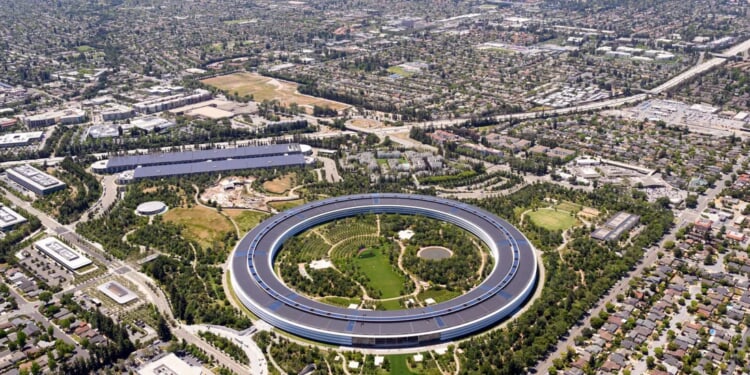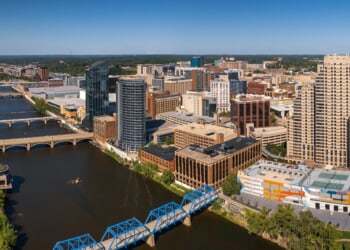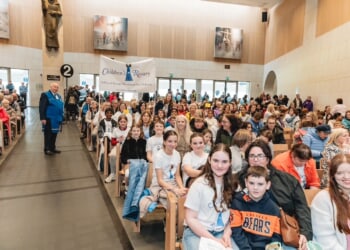Once home to innovation and the center of a new era of technology, California has steadily bled tech jobs — and insiders tell the Daily Caller News Foundation that Democrats’ surface-level efforts are only making things worse.
Northern California’s Bay Area hosts the historic Silicon Valley, where Steve Jobs, Bill Gates, and Larry Page led the 1990s tech boom. Since the 2020 COVID-19 lockdowns, California has seen a sharp decline in the industry it once dominated.
CA’s TECH CROWN IS SLIPPING
Since 2020, the state has only added an estimated 6,000 tech jobs, falling to its lowest levels since 2008, according to the Economic Times. Before the lockdowns, roughly 19% of all U.S. tech jobs were located in California, but that number has since dropped to 16%, a 3% decline, including another 0.4% dip over the past year alone, Apricitas Economics reported.
While tech jobs are down nationwide, California has been hit particularly hard. Between 2020 and mid-2022, the state’s tech sector grew by 60,000 jobs but has since declined by 71,000 between 2022 and 2025, according to Apricitas Economics.
Innovation advisor and former Obama fundraiser Allison Huynh told the DCNF that the industry was completely different in the 1990s. Coming to Stanford from Texas, Huynh joined an engineering fraternity and helped organize one of the nation’s first business plan contests — where Google’s blueprint got its start. (RELATED: Newsom Forces Apple And Google To Track Kids’ Ages Under New California Law)
Huynh said the reason tech jobs are leaving for places like Florida or Texas is due to a “perfect storm” of issues, citing California’s infamous high cost of living, crime and homelessness.
“I think it’s just common sense that the tech jobs are leaving. People want the American dream, lower living costs, safer communities, schools that actually work and a shot at owning a home. It’s very expensive to own a home in California. I mean, California’s prices are outrageous. 70% of the people in San Francisco rent and they don’t own. So you can’t achieve the American dream in San Francisco,” Huynh told the DCNF.

An aerial view above the Tenderloin at sunset. (Getty Images/ Diane Bentley Raymond)
“It’s just a perfect storm in California of high taxes, unaffordable homes. We have the highest gasoline and grocery costs, suffocating regulation,” Huynh added. “There’s a lot of oil and gas here and we find gas in California, in Southern California, but there’s so much regulation that we’re driving the energy sector out of California. Thus forcing us to import oil and gas from either Canada, the Middle East, other parts of the world that makes our energy and our gas prices really high and everything, the price of groceries and everything depends on your energy cost.”
Another tech entrepreneur, Gregory Bennett, who used to live in San Francisco, told the DCNF that he left for Florida “to explore greener pastures.”
“I was living in San Francisco and I did everything I thought I could to change the city for the better. There are all these like homeless problems, housing problems and these like the major factors. So I worked in those services for, I worked in tech for seven years and I worked in those services for two years,” Bennett said.
“What I ended up seeing afterwards, very similar to what everyone sees today is … these welfare services are like a monopoly and they feed on the city,” Bennett added. “They don’t wanna get smaller, they wanna get bigger. They don’t wanna solve the problems. They wanna employ more people and feed the problem. I didn’t see anything I was doing was making things better. I was just upsetting the organizations by asking for change. So there was no hope in sight for the city improving.”
NEWSOM BETS ON AI
Many companies including Tesla, Oracle and Palantir left California in recent years, citing crime, high taxes and burdensome regulation.
In another recent push to address the state’s ongoing issues, Newsom announced in August that he signed agreements with four of the largest tech companies in the GenAI sector. The partnerships include Google, Adobe, International Business Machines (IBM) and Microsoft, which will train California’s workforce for a wide range of AI jobs, including programs to prepare high school and college students for high-paying careers in these fields.
Despite the governor’s optimism about the AI partnerships, both Huynh and Bennett warned of the potential negative effects on the job market.
“There’s a lot of talk about AI automation and then Gavin Newsom and everyone’s talking about, ‘Oh, we’re going to make AI and innovation a hub in California’ and he over focuses on that. But what happens is that AI, you only really need a few AI researchers, AI visionaries, cybersecurity folks, and it’s basically jobs for the elites,” Huynh told the DCNF.
“So they may be creating a few thousand jobs, but laying off tens and tens of thousands — 70,000 probably hundreds of thousands of people along the way, not just in tech, but in customer service and in legal assistant and customer service and sales rep, right? Things that are easily automated by AI,” Huynh added. “So those types of entry level jobs, just think of any type of job that you might get when you first graduate from college, those types of jobs are now being automated by AI.”
IBM announced Tuesday it will lay off a “low single-digit percentage” of its workforce, with a potential 1% cut equating to 2,700 jobs. In October, Google laid off more than 100 employees from design roles within the company’s cloud unit, prioritizing investment in AI, CNBC reported.
While Bennett applauded AI for essentially keeping San Francisco afloat on innovation, he warned about associated unemployment issues, echoing Huynh.
“The only thing AI does is increase productivity. It gives everybody a research assistant and it gives someone worse than you and someone better than you at the job you currently do, so that one person can be two [times] more productive,” Bennett told the DCNF. “That person’s not gonna get paid more. They’re gonna get paid probably exactly the same. Then there’s gonna be one or two people around them that get let go eventually. That’s it. It’s a productivity tool.”
“I mean, the only additional jobs are like AI researchers which are just what used to be called data scientists. So those jobs were already there. In the tech space, you’re decreasing your amount of coders you need by like 30, 40% of your software developers,” Bennett added. “So there’s not a single place where AI is creating additional jobs. They’re just converting like people who had different titles to newer titles. Then you’re decreasing a bunch of other people that were now unnecessary.”
Newsom’s office did not respond to the DCNF’s request for comment.
In addition to AI, H-1B visas are also a factor hampering citizen tech employment. With H-1B visa holders typically being paid less despite similar skill levels, both Huynh and Bennett said the combination of competition from visa holders and AI automation is working against American tech jobs.
When asked if there was hope for the state and what it should do, Huynh said California needs to remember its prior innovation leadership and incentivize entrepreneurs to return by lowering housing costs, reducing red tape and implementing tax breaks.
“California needs to get hungry again. Copy the bold incentives that Dubai and Singapore are offering, cut red tape, fast track business permits, throw out serious tax breaks for high-growth sectors like robotics and healthcare AI. Turn empty government buildings into labs and startup spaces. Ask entrepreneurs what they need—and deliver. The playbook exists; California just forgot it wrote it,” Huynh said.
All content created by the Daily Caller News Foundation, an independent and nonpartisan newswire service, is available without charge to any legitimate news publisher that can provide a large audience. All republished articles must include our logo, our reporter’s byline and their DCNF affiliation. For any questions about our guidelines or partnering with us, please contact licensing@dailycallernewsfoundation.org.


![Scott Bessent Explains The Big Picture Everyone is Missing During the Shutdown [WATCH]](https://www.right2024.com/wp-content/uploads/2025/11/Scott-Bessent-Explains-The-Big-Picture-Everyone-is-Missing-During-350x250.jpg)













